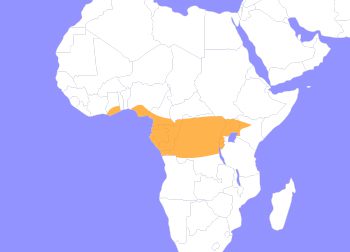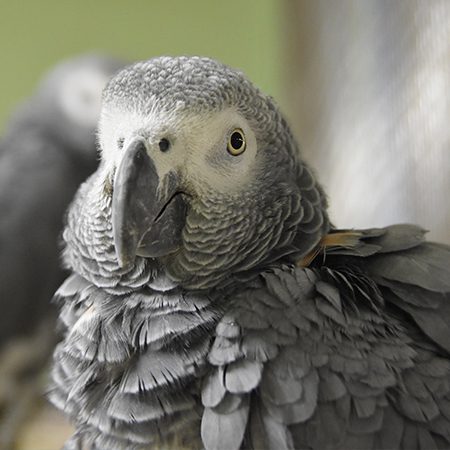Congo African Grey
Psittacus erithacus
The Congo African Grey parrot (Psittacus erithacus), is also known as the Congo grey parrot, grey parrot, or African grey parrot. The congo grey parrot is an Old World (regions of Africa and Europe) parrot in the family Psittacidae. The congo grey was once thought to have a subspecies called The Timneh parrot (Psittacus timneh). In more recent studies, it has been elevated to a full species.
The grey parrot is a medium-sized, mainly grey colored parrot, with a black bill. An adult congo greys average weight is 0.88 lb, ranging between 0.922–1.160 lbs. They are approximately 13 in long, with a wingspan of 18–20 in. It has darker grey than its body over the head and both wings, with red tail feathers. Fun fact, it’s been shown through selective breeding by parrot breeders, some grey parrots are partly or completely red. Typically both sexes appear similar in size and color. The coloration of juveniles is similar to that of adults, but typically, their eyes are dark grey to black, in comparison to the yellow irises around dark eyes of the adult birds. Congo grey parrots may live for 40–60 years in captivity, although their mean lifespan in the wild appears to be shorter — typically around 23 years.

Congo African Greys are native to equatorial Africa, ranging across Angola to Uganda.
HABITAT -The congo grey is found in equatorial Africa, inhabiting rainforests, mangroves, and wooded savannas and gardens.
DIET -They are herbivorous, eating a variety of seeds, nuts, fruits, berries, and vegetation.
FUN FACT -Of the African grey parrots, the congo grey is the largest!
SOCIAL BEHAVIOR -They are highly social parrots, that need a lot of interaction with their handlers.
ACTIVITY -They are diurnal being most active during the day and resting during the evening.
PREDATORS -Predators include birds of prey such as hawks and falcons. Monkeys will also steal parrot eggs.
SIZE -Average weight is 0.88 lb, ranging between 0.922–1.160 lbs. They are approximately 13 in long, with a wingspan of 18–20 in.
RELATIVES -The timneh african grey parrot is the closest parrot relative of the congo grey in the family Psittacus.
CONSERVATION -Congo african greys are categorized as EN (Endangered) by the IUCN.
Cub Creek Animal Care Information
Diet - To ensure they get all the necessary nutrients, our birds are fed ZuPreem FruitBlend large bird pellets as well as fresh fruits and vegetables such as apples, bananas, shredded sweet potato, and greens. They also love getting peanuts as a treat! They are given access to fresh water everyday.
Enrichment - Parrots are very intelligent birds and therefore need lots of enrichment to keep them entertained. Their cages are filled with various hanging toys they can rattle and hang on; they love being given paper to shred. Just about anything that campers can make out of cardboard, chains, or nest boxes the birds will enjoy!


